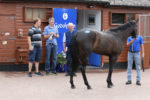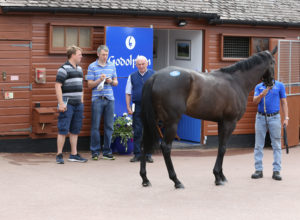After racing’s resumption in France, Germany and Italy, we saw the new normal for European racing on television or in pictures. Facemasks, social distancing, empty racecourses.
In June we witnessed the impact of Covid-19 on British racing, the Flat season finally getting under way some 63 days later than it should have done.
Surreal has replaced real in everyday life, but while racing’s uprooted fixture list is taking some getting to grips with, the experience of watching the 1,000 and 2,000 Guineas from Newmarket was perhaps not so very different.
We didn’t hear any cheering, it’s true, but then the crowd factor has never been a synonymous feature of racing on the Rowley Mile.
Facemasks aside, there were plenty of familiar, comforting aspects. The two Classics had a supporting cast that included the Palace House, Pretty Polly Stakes, Dahlia Stakes and Newmarket Stakes. The ITV cameras brought the best of the action to our homes. The jockeys, their silks, the personalities and horses provided much-needed comfort blankets after months of uncertainty, following on from the return of racing at the start of the month at Newcastle.
A much starker illustration of what Covid-19 means for racing in 2020 was to come just a week and a half later at Royal Ascot.
The meeting would normally fall six and a half weeks after Guineas weekend, but this is a year like no other.
Royal Ascot 2020, from top to bottom, will be remembered for being conspicuously different, a VIP victim of the profound changes caused by the pandemic.
Out went thousands of spectators, the colour, hats, dresses, morning suits, atmosphere, singing round the bandstand, and a large dollop of prize-money. In came six extra races, including three brand new handicaps, along with those aspects of Covid-19 life we are all now familiar with.
There were also running order revisions due to the unusually close proximity of the Guineas meeting and the rearranged Derby and Oaks.
Nick Smith, Ascot’s Director of Racing, says: “There have been some unusual renewals of the royal meeting in the past, from ‘Black’ Ascot [in 1910 following the death of King Edward VII] to Royal Ascot at York, but there has never been anything like this.
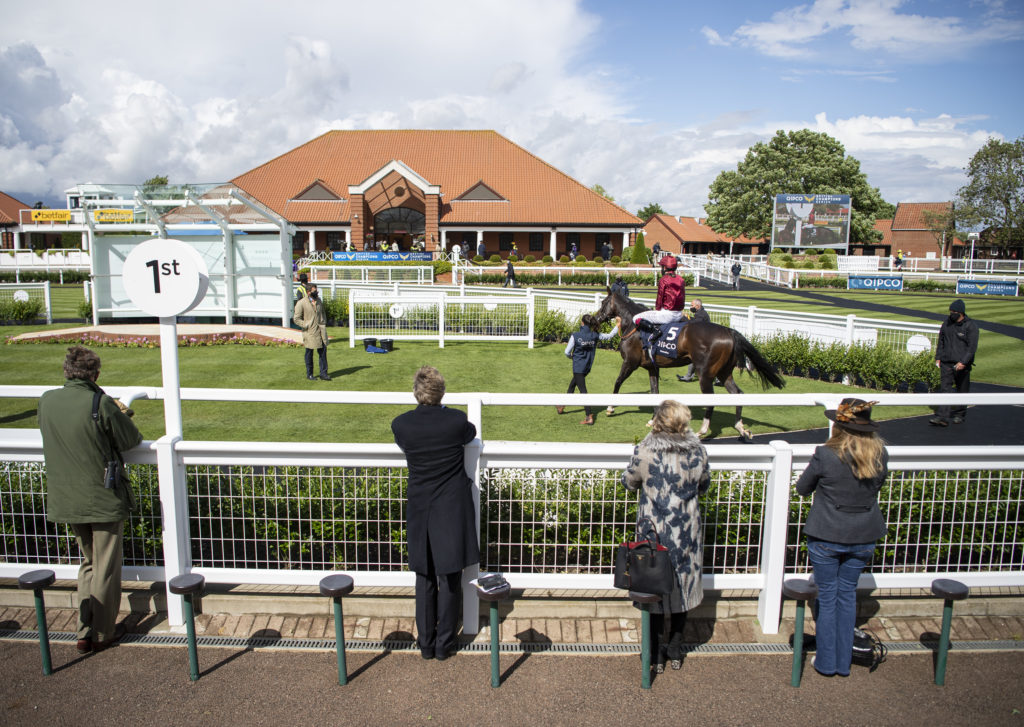
Kameko returns to a different kind of reception after winning the QIPCO 2,000 Guineas – Photo: Edward Whitaker
“Arguably, Royal Ascot, with all its pageantry and sitting at the centre of the fashion and social calendar, will be the least recognisable meeting held in the UK during this crisis.”
He continues: “These are tough times and prize-money can’t be what it was, which is a real shame as we had announced our first £8 million- plus renewal, including two £1 million races. Realistically, that landscape isn’t possible any more, and it will take several years to begin to rebuild.
“Everyone is going to be in the same boat but we’ll do our best in an environment where betting shops have been closed and no-one is making any bold predictions about the return of crowds. In our case, we are particularly reliant on hospitality, and even when we can reopen to crowds, social distancing is going to impinge heavily on our business plan.
“However, we’re staying very positive. We need to get betting turnover up and running around the country to begin to take some of the strain off the Levy Board. Race- planning from the BHA has been imaginative, and the whole industry has shown flexibility and acted in a unified fashion to frame a new, temporary Pattern.”
Prize-money for Royal Ascot 2020 weighed in at £3,680,000, down 55 per cent on plan, with the eight Group 1s all worth £250,000 – the same as the two Guineas had been run for.
Suffice to say, prize-money, off the back of the impact of Covid-19, is going to be an area of major concern – and therefore focus – for the sport, certainly this year and very likely beyond.
While the most dramatic reductions will be at the top end, changes to the minimum values structure indicate it is at the middle and grassroots levels where the sport feels it needs to mitigate the hammer blows of Covid-19.
The Levy Board has dug deep to shore up purses over the first ten weeks of resumption, with £15.7 million of contributions, but on average minimum values for now will be 80% of previous levels.
Levy Board Chairman Paul Darling says: “We recognised the importance of providing over and above contributions to prize-money when racing resumed and are pleased to have been able to meet racing’s requests in full.
“However, while we start from a position of having enough cash reserves to meet these requests, our expenditure in this period will almost certainly exceed our income. HBLB is already expending over £2 million a month in maintaining pre-existing grants to various areas, which will continue in addition to [this] prize- money expenditure.”
Total prize-money for the first ten weeks following resumption will amount to £16.4m, up 23% from the same period in 2019, with the Levy Board saying the increase reflected a desire to reward breeders, owners, trainers, jockeys and stable staff given the enforced inactivity.
To support the increase in prize-money, the Levy Board said all major bookmakers in its Betting Liaison Group agreed to make available confidential reports on race-by-race turnover and gross win on a weekly, rather than monthly, basis.
Protecting grassroots racing
The focus on mid to lower tiers of the sport is primarily to support the retention of owners – the single biggest contributors to the funding of British racing – and horses in training, with the most recent figures underlining the impact of Covid-19, albeit at a time of year when numbers do tend to fall given the traditional end of the jump season.
Owners have been widely praised for doing all they can to keep horses in training despite the most trying of circumstances, but perhaps even more so than the lack of racing, the effects of Covid-19 on business and economies are taking their toll.
As of May 17, there were 12,188 horses at licensed yards, down from 14,779 on April 1, a drop of 2,591, or 18%.
To put that in context, the decline in the same period in 2019 was 2,470 (14%). In 2019 numbers were much higher, that period’s fall taking the May 17 figure to 14,886, though of course by April 1 this year the jumps season was unfortunately over, so many horses would have been out of training or retired.
BHA Chief Operating Officer Richard Wayman says: “Comparing horses in training numbers between different years is rarely straightforward, and that is going to be the case at the moment with jump racing not returning until July 1 and, on the Flat, some horses remaining with their owners for longer than would normally be the case.
“As an industry we’re hugely reliant on the vast sums invested by racehorse owners, who have previously shown themselves to be extremely loyal and resilient even in very difficult times.
“However, the current situation and the associated financial pressures are unprecedented, and this has created significant challenges.
“Although financial measures, for example the Racing Relief Fund, will have provided some assistance, these challenges are exactly why the sport’s resumption was so crucial to owners, trainers and the thousands of people employed in our industry.”
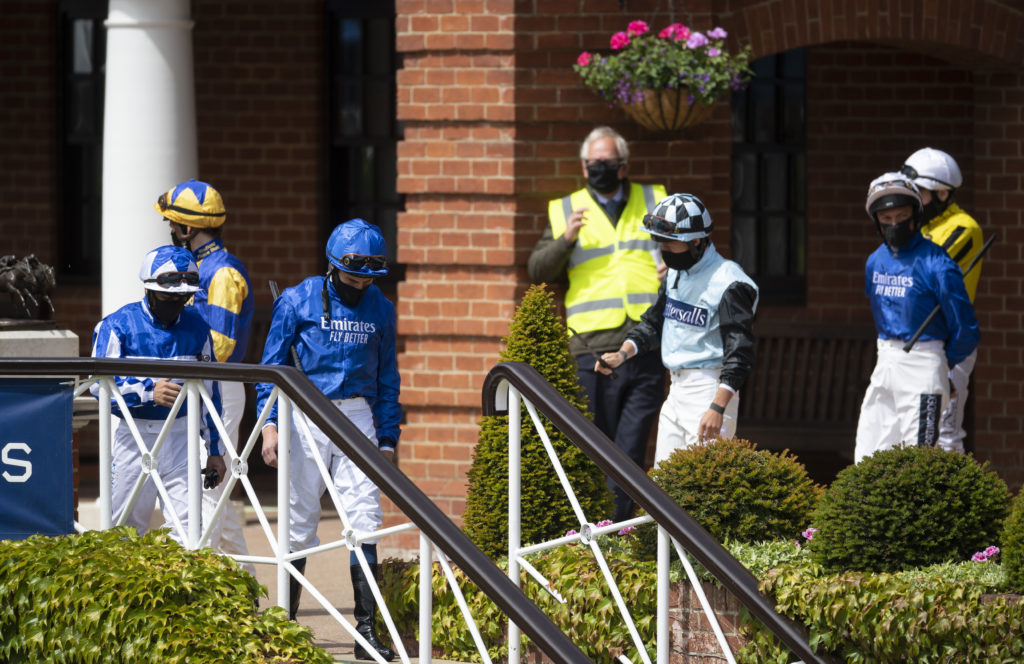
Jockeys walk out of the weighing room for the Betfair Dahlia Fillies’ Stakes – Photo: Edward Whitaker
As for the number of registered owners, the BHA gave a figure of 6,781 for the end of April 2020. Including clubs and syndicates, a total of around 15,000 owners in the UK has been reported.
With such a spectrum, from the sheikh with hundreds of horses to a person with a hundredth share, it is impossible to predict what the lasting impact of Covid-19 will be on owner numbers. Everyone’s circumstances will be different, along with priorities over which ‘luxury’ items to keep and which to ditch.
Dan Abraham, Chairman of the Racehorse Syndicates Association, whose members own more than 700 horses and have 9,000-plus owners, reports: “Last month the RSA organised a Zoom forum with 35 of the leading syndicate and club managers in Britain and overall it seemed most syndicates did not feel they had been too badly affected so far, although many had experienced complications, such as the disposal of horses at the end of partnership agreements.
“Syndicates reported few people had dropped out, but finding new shareholders had become very difficult, and many syndicators had been left with shares they couldn’t sell.
“Syndicate managers are possibly in one of the worst positions. If two or three members drop out, the manager is left to pay the bill for those shares. Covid-19 is a reminder to regulators that it’s not just syndicate members that need protection; even more so it’s the syndicators, who risk huge liabilities to bring in new owners to our sport.”
Abraham continues: “The resumption of racing was the start, not the end, of the recovery. After racing’s return, owners will want to see their patience and considerable financial support for the industry rewarded, and that will be difficult when owners, as we speak, can’t go racing.
“It doesn’t feel like owners are dropping out in numbers now, but if owners feel forgotten about then racing could face a disaster.
“It’s when an owner’s horse picks up an injury, when the trainer tells the owner his horse needs more time, when a trainer rings an owner to see if they want to buy a horse they have spotted in the sales catalogue; that’s when owners will judge if they have been well looked after by racing, whether their expenditure on racing is good value compared to other leisure activities.
“Then racing is really going to find out whether its response to Covid-19 for owners has been a success.”
New fixture list
One thing that will unite owners from top to bottom is the need to wrestle with the new fixture list.
The BHA has published a revised programme, with the Derby and Oaks on July 4, the Eclipse moved back a day to July 5, along with a range of new dates for some of the more significant contests unable to be staged during the lockdown.
The Racing League, to comprise 36 races over six consecutive Thursday summer evenings, has been rearranged for 2021, while there will be no 2020 Shergar Cup. Mercifully, in a win for normality, Glorious Goodwood (July 28-August 1) and the Ebor meeting (August 19-22) stay put, although Goodwood was forced to accept defeat when it came to any hopes of having paying spectators.
The bloodstock sales calendar has undergone even more upheaval, with auctions being rescheduled not just once but in some cases several times, as sales houses reacted to the ever- changing Covid-19 dynamic.
From the international sales that have taken place – online in most cases – in the past few months, it is apparent trading will be challenging this year. The state of the economy will be a big factor in determining the longer- term impact of coronavirus on the bloodstock world.
In the shorter term, Covid-19 brought with it for the racing industry not just fundamental changes, like the fixture list, but a whole raft of temporary new guidelines and procedures, among them initially 72-hour declarations for Flat racing, a field size limit of 12 for non-Pattern and Listed races, and horses being eligible for a handicap rating after just two runs.
There will also be plenty for the jump racing community to grapple with next month, when that branch of the sport resumes.
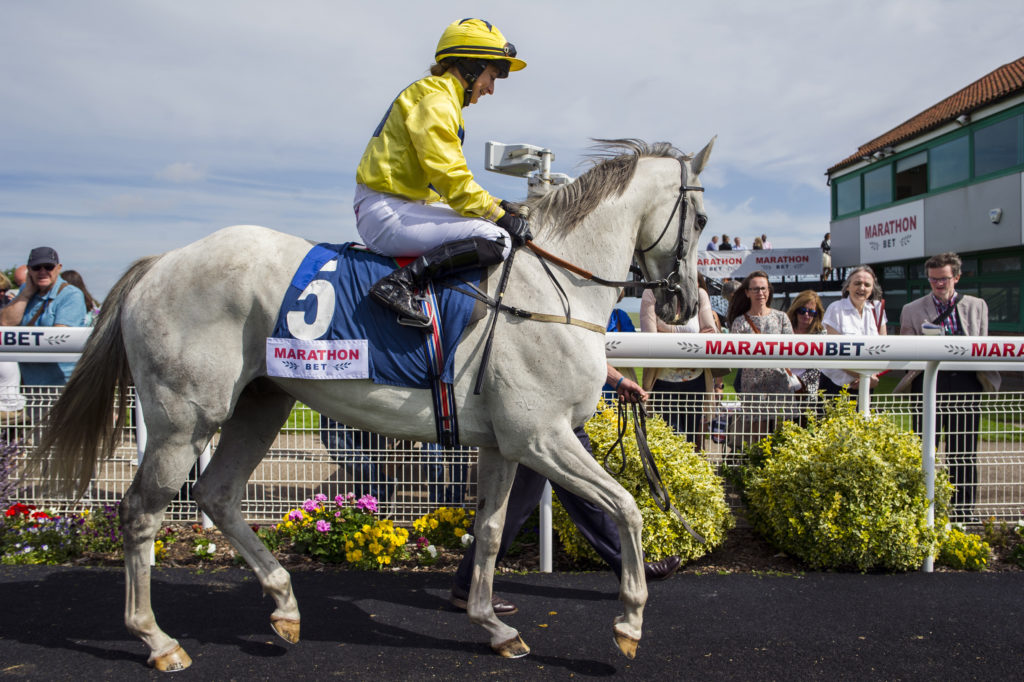
Popular grey Roy Rocket will be unable to run at his favourite track Brighton this summer – Photo: George Selwyn
So, are there any rays of light? Well yes, actually. For starters – and with much nourishment for racing’s circle of life – betting shops were due to reopen as this magazine went to press.
It had been feared that bookmakers’ retail arms would be closed until the autumn, with all the consequential damage that springs from the drop in media rights payments to racecourses, and levy. While it remained to be seen just how many of Britain’s 7,000 or so shops would reopen, their earlier than expected return is good news.
So too was the recent launch of the Great British Bonus, an industry incentive scheme offering multiple bonuses of up to £20,000 per eligible race for British-bred fillies and mares. The aim is to increase the number of British-bred horses in training, and so safeguard the future of British breeding.
What the future will look like for the racing and bloodstock industries as a whole, post Covid-19, may turn on two key issues – when paying spectators can return to racecourses, and how long economic gloom persists.
We don’t have the answers yet.
If racecourse crowds return sooner rather than later, then in all likelihood the longer-term prognosis is far from bleak. The consequences of economic malaise could be more far-reaching in terms of bloodstock sales, horses in training and owner numbers, while a second Covid-19 spike would redefine ‘disastrous’.
All we can do for now is keep calm and carry on racing.


